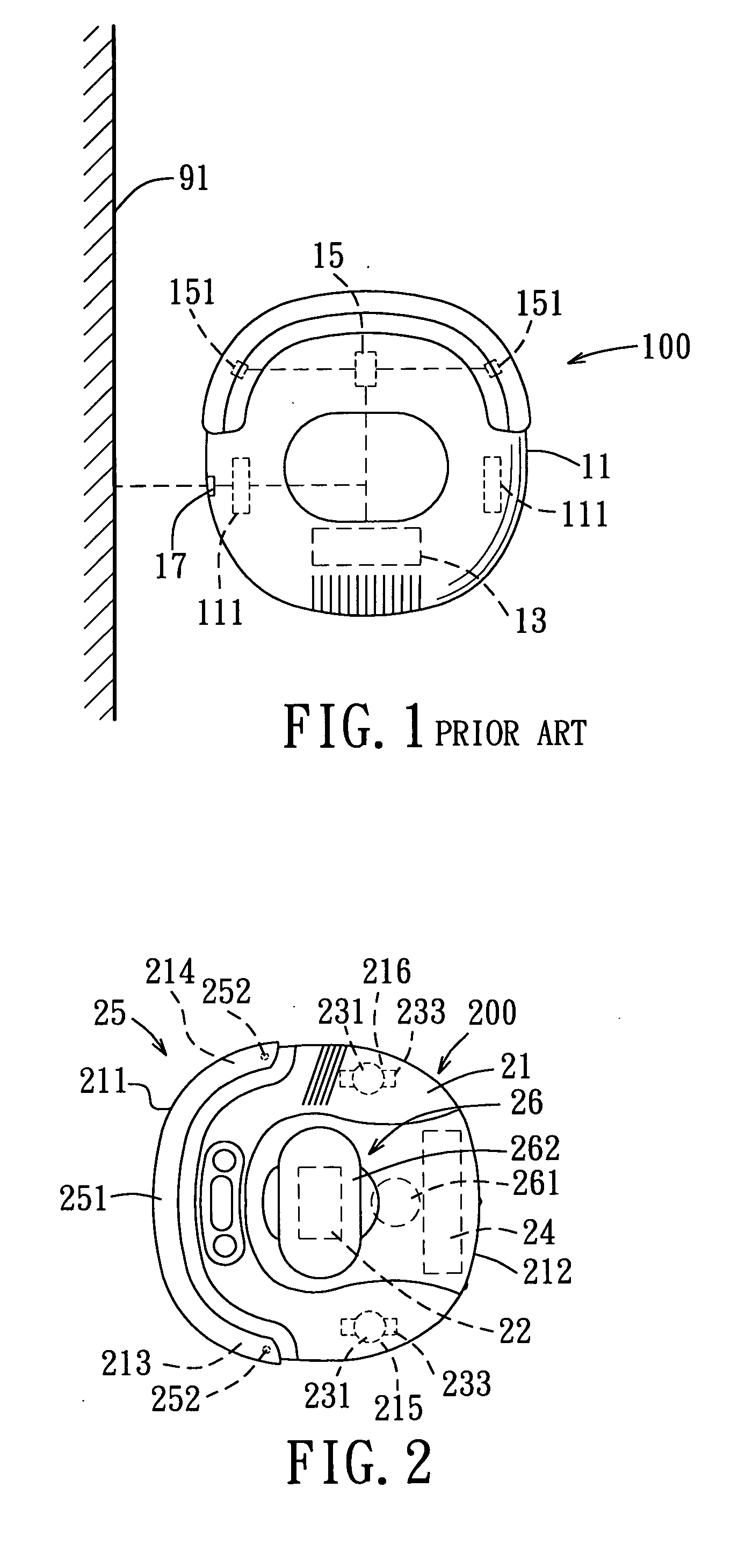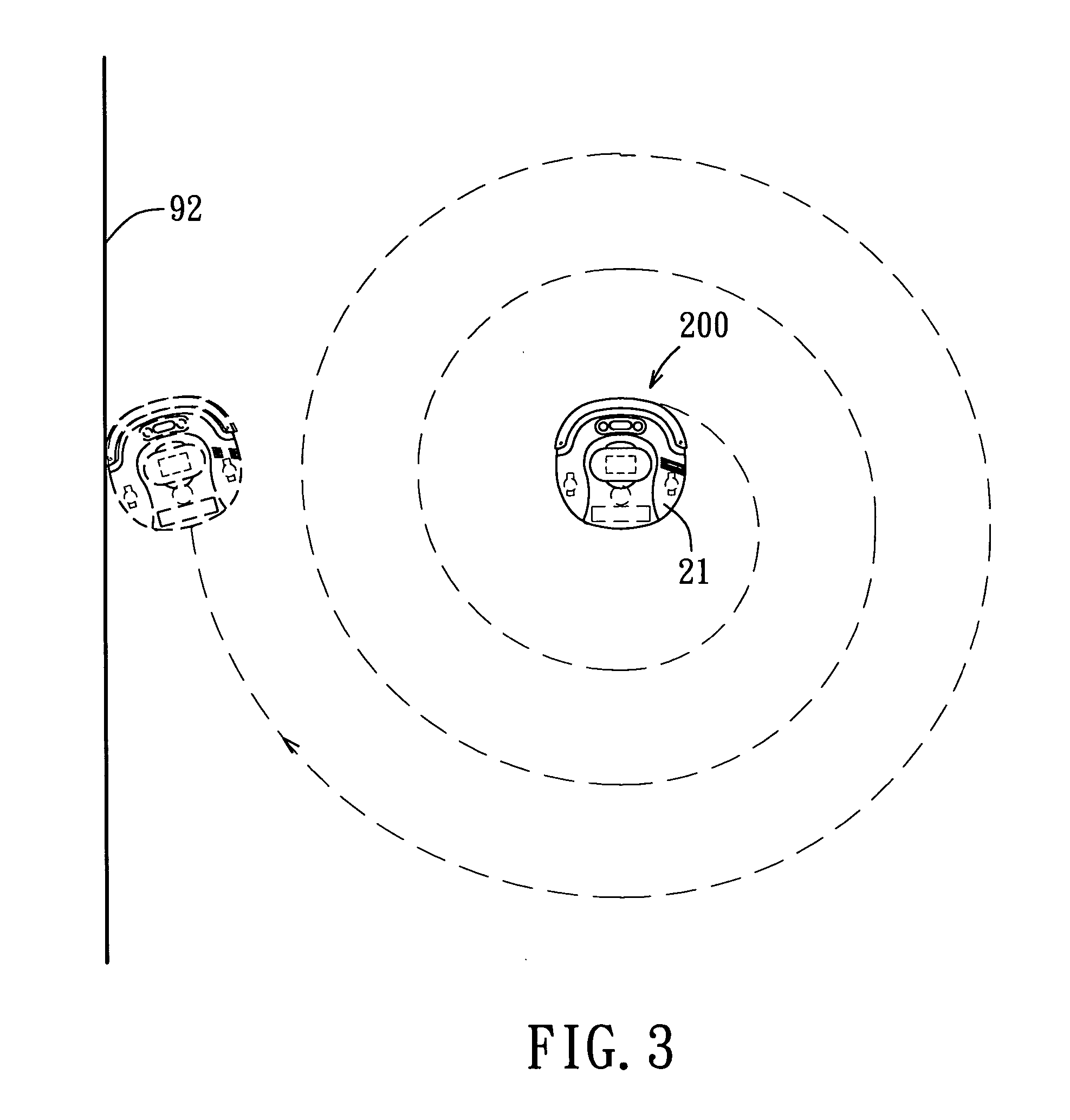Robotic vacuum cleaner
a robotic vacuum cleaner and vacuum cleaner technology, applied in the direction of vehicle position/course/altitude control, process and machine control, instruments, etc., can solve the problems of large distance, damage to the robotic vacuum cleaner, and inability to easily reach the edges of obstacles, etc., to achieve a better cleaning
- Summary
- Abstract
- Description
- Claims
- Application Information
AI Technical Summary
Benefits of technology
Problems solved by technology
Method used
Image
Examples
Embodiment Construction
[0017] Referring to FIG. 2, the preferred embodiment of a robotic vacuum cleaner 200 according to the present invention is shown to comprise a casing 21, a suction unit 26, a motor-driven wheel unit, a drive motor unit, a tactile sensor unit 25, and an electrical control unit 22.
[0018] The casing 21 has a lower major wall 212 which is adapted to confront a floor surface to be cleaned, and which includes a central area that defines a central axis normal to the central major wall, and a surrounding peripheral area that surrounds the central area about the central axis. The surrounding peripheral area includes a leading region 211 which is positioned ahead of the central area when the casing 21 is driven to move along the floor surface, left and right front regions 213, 214 which flank the leading region 211, and left and right rear regions 215, 216 which are disposed rearwardly of the left and right front regions 213, 214, respectively.
[0019] The suction unit 26 is disposed in the l...
PUM
 Login to View More
Login to View More Abstract
Description
Claims
Application Information
 Login to View More
Login to View More - R&D
- Intellectual Property
- Life Sciences
- Materials
- Tech Scout
- Unparalleled Data Quality
- Higher Quality Content
- 60% Fewer Hallucinations
Browse by: Latest US Patents, China's latest patents, Technical Efficacy Thesaurus, Application Domain, Technology Topic, Popular Technical Reports.
© 2025 PatSnap. All rights reserved.Legal|Privacy policy|Modern Slavery Act Transparency Statement|Sitemap|About US| Contact US: help@patsnap.com



